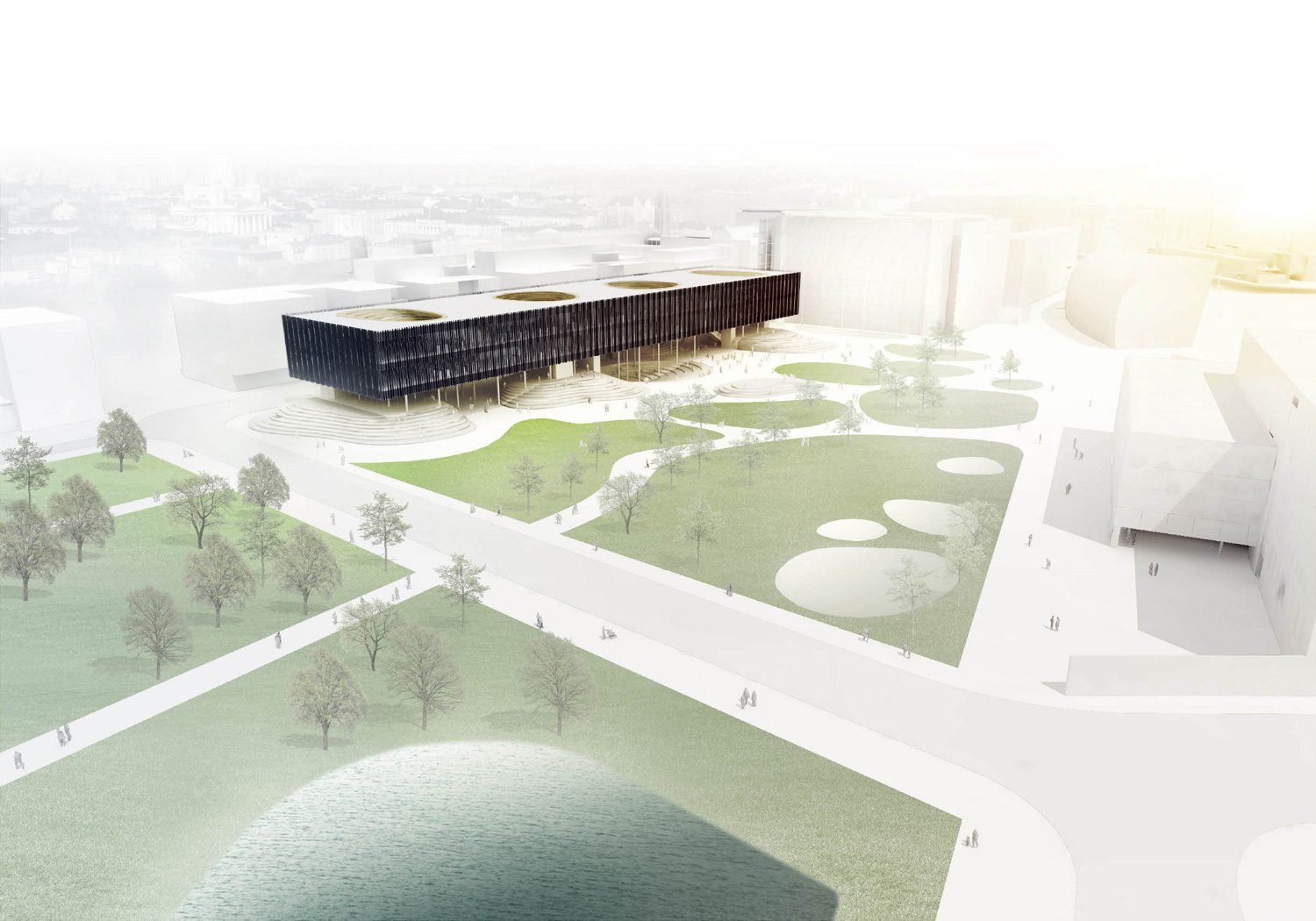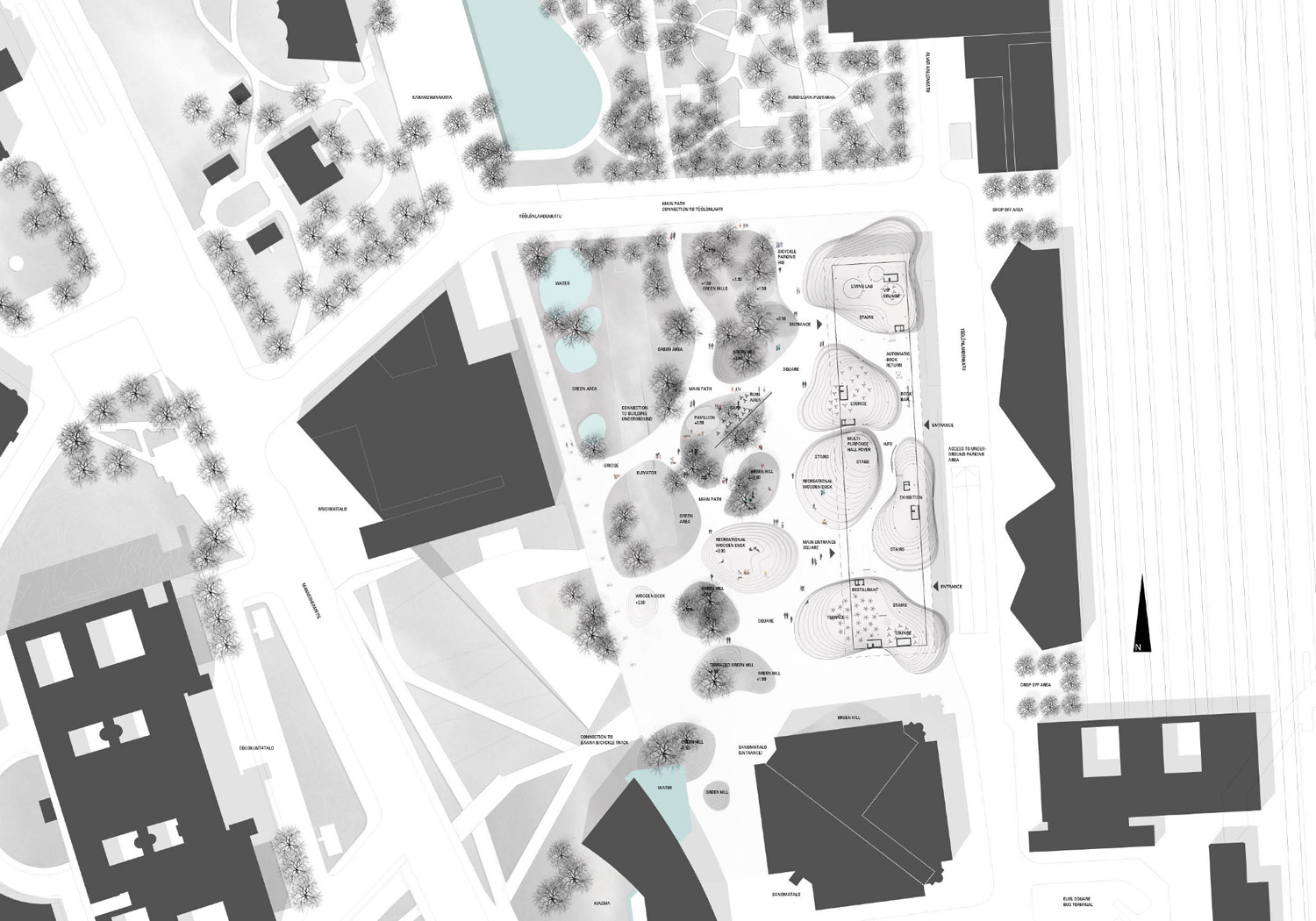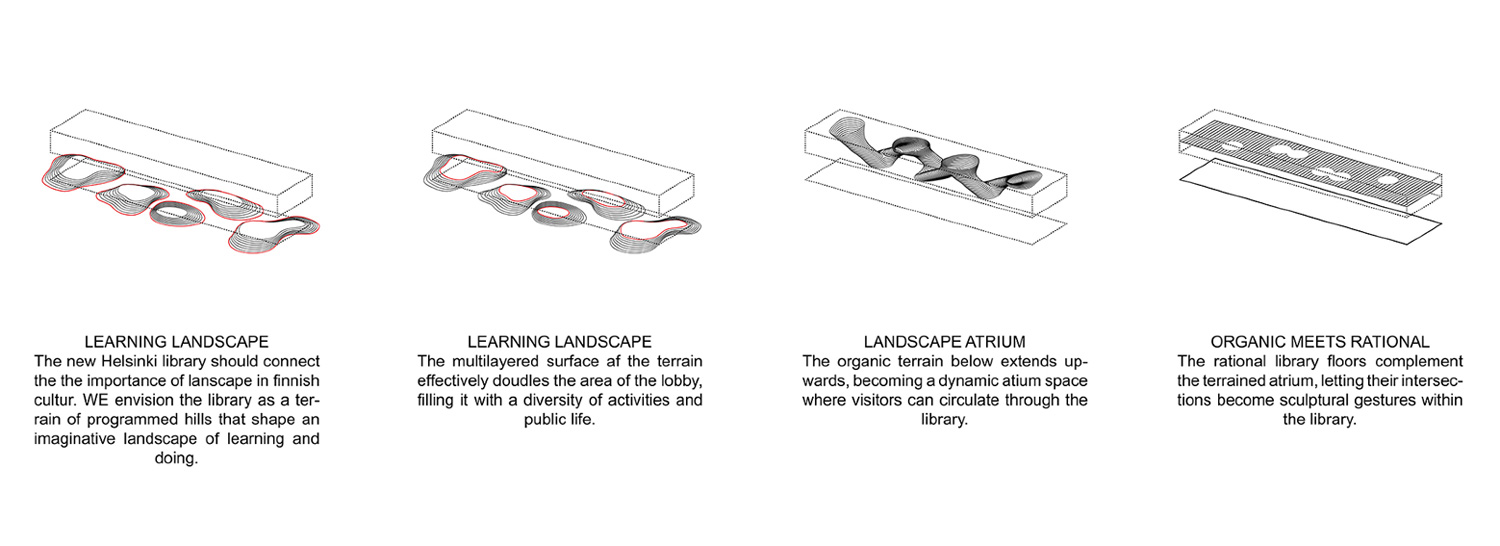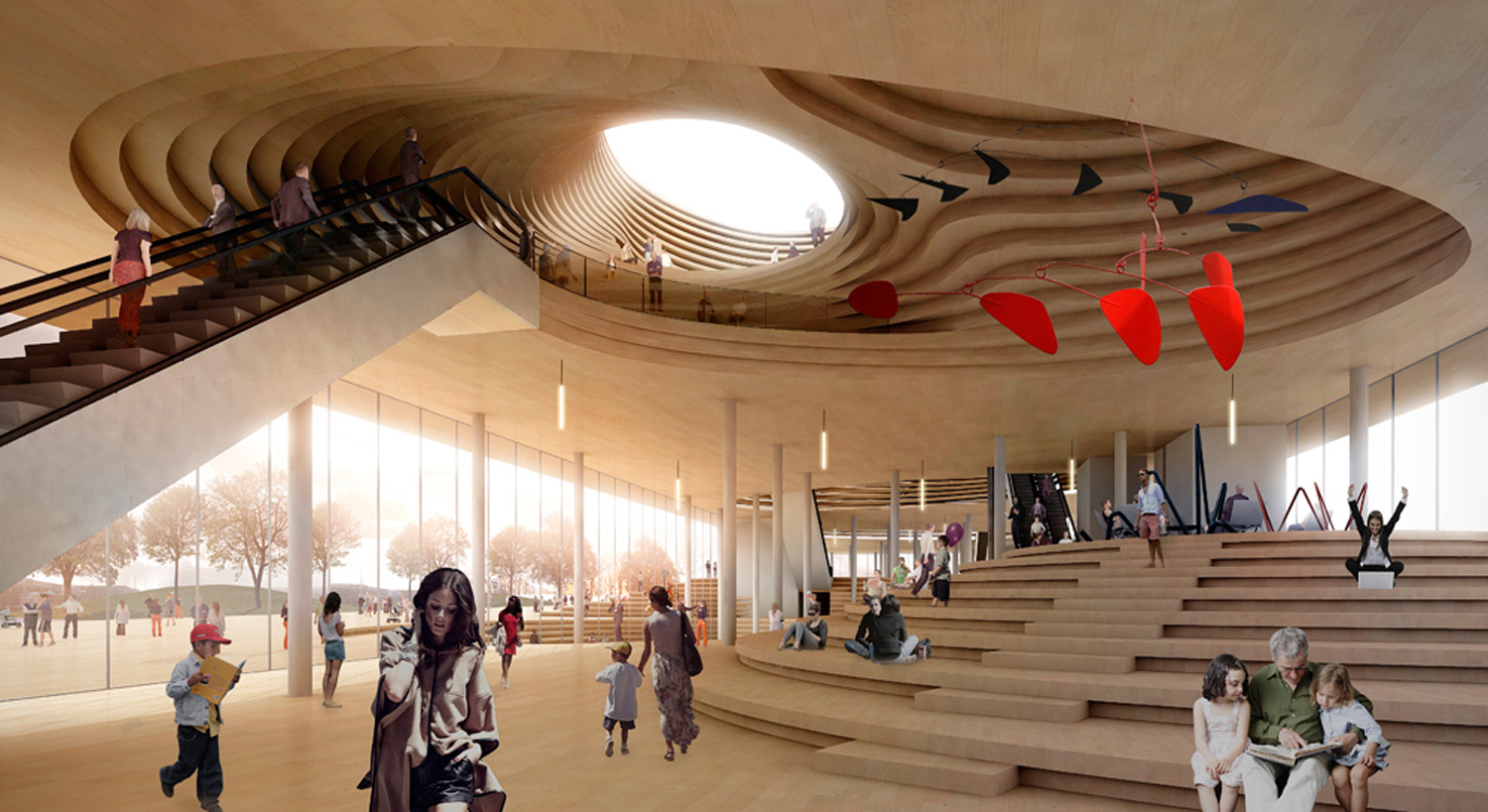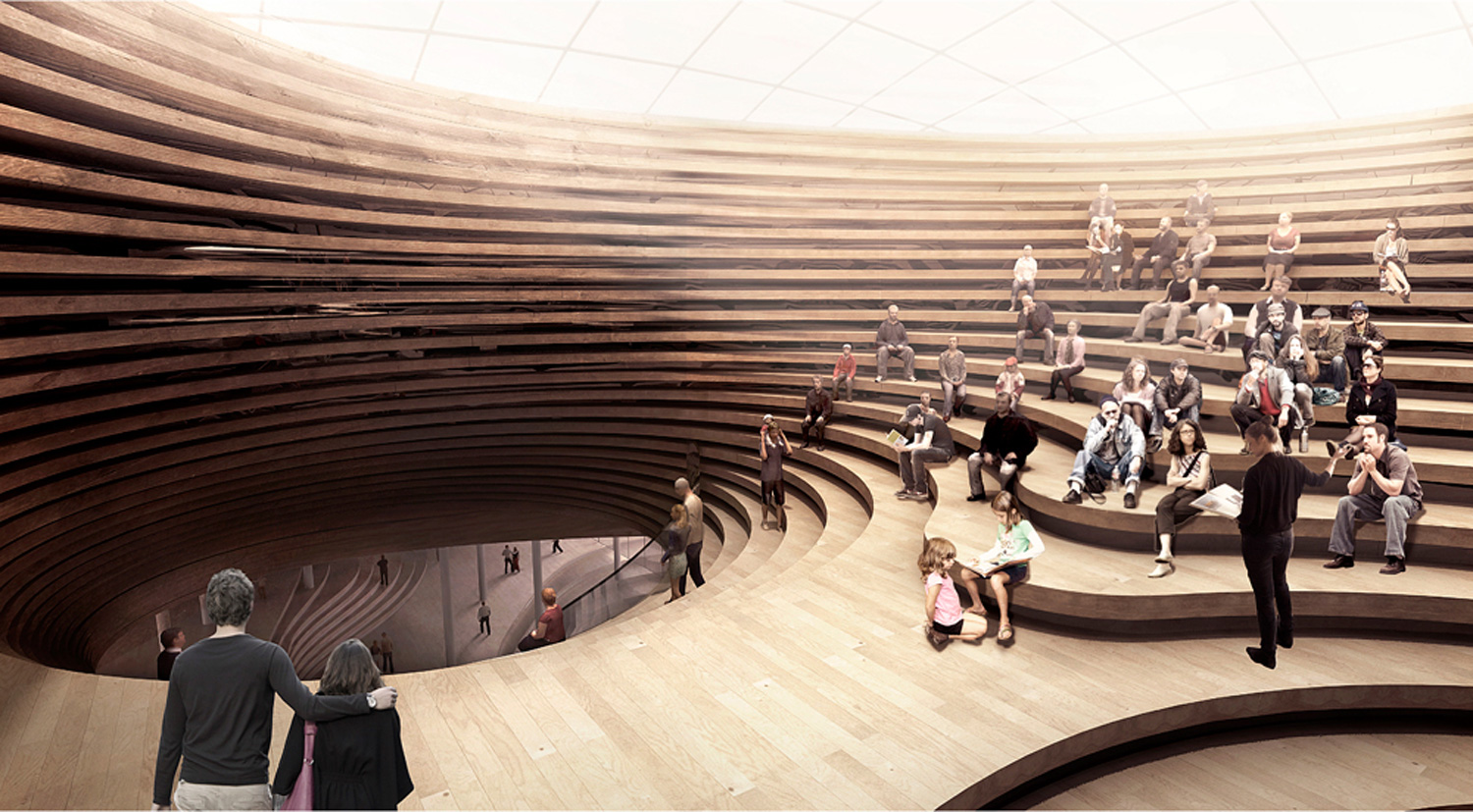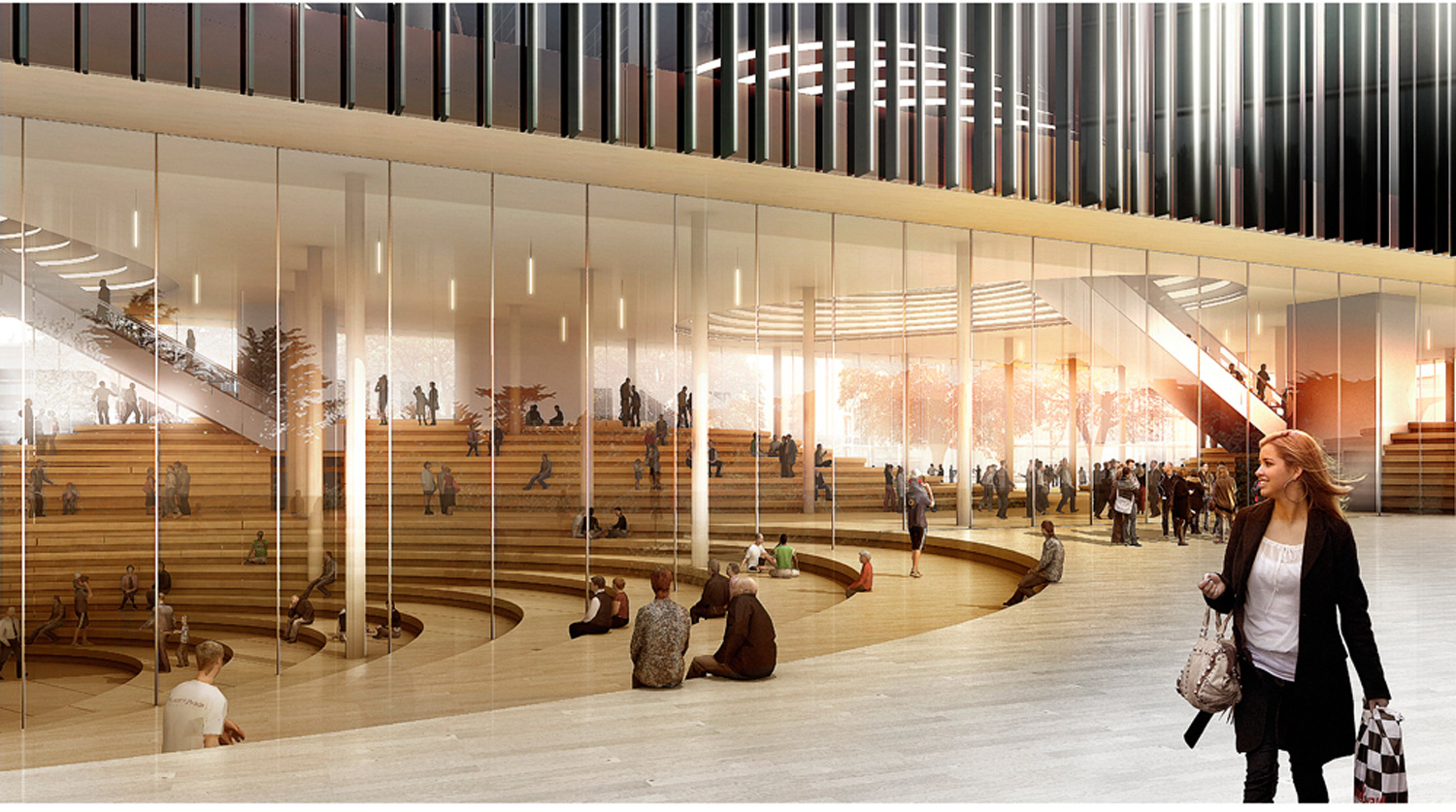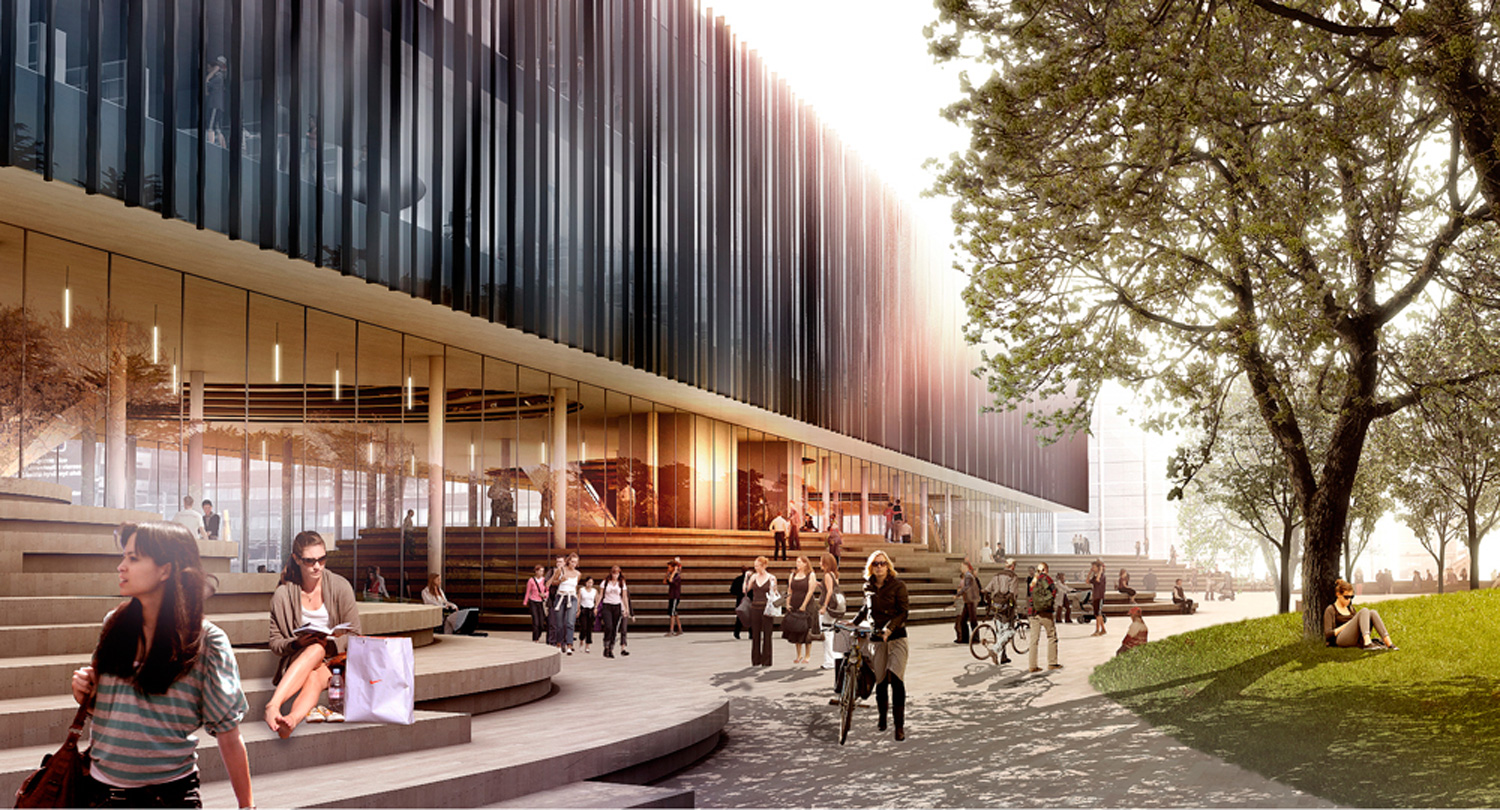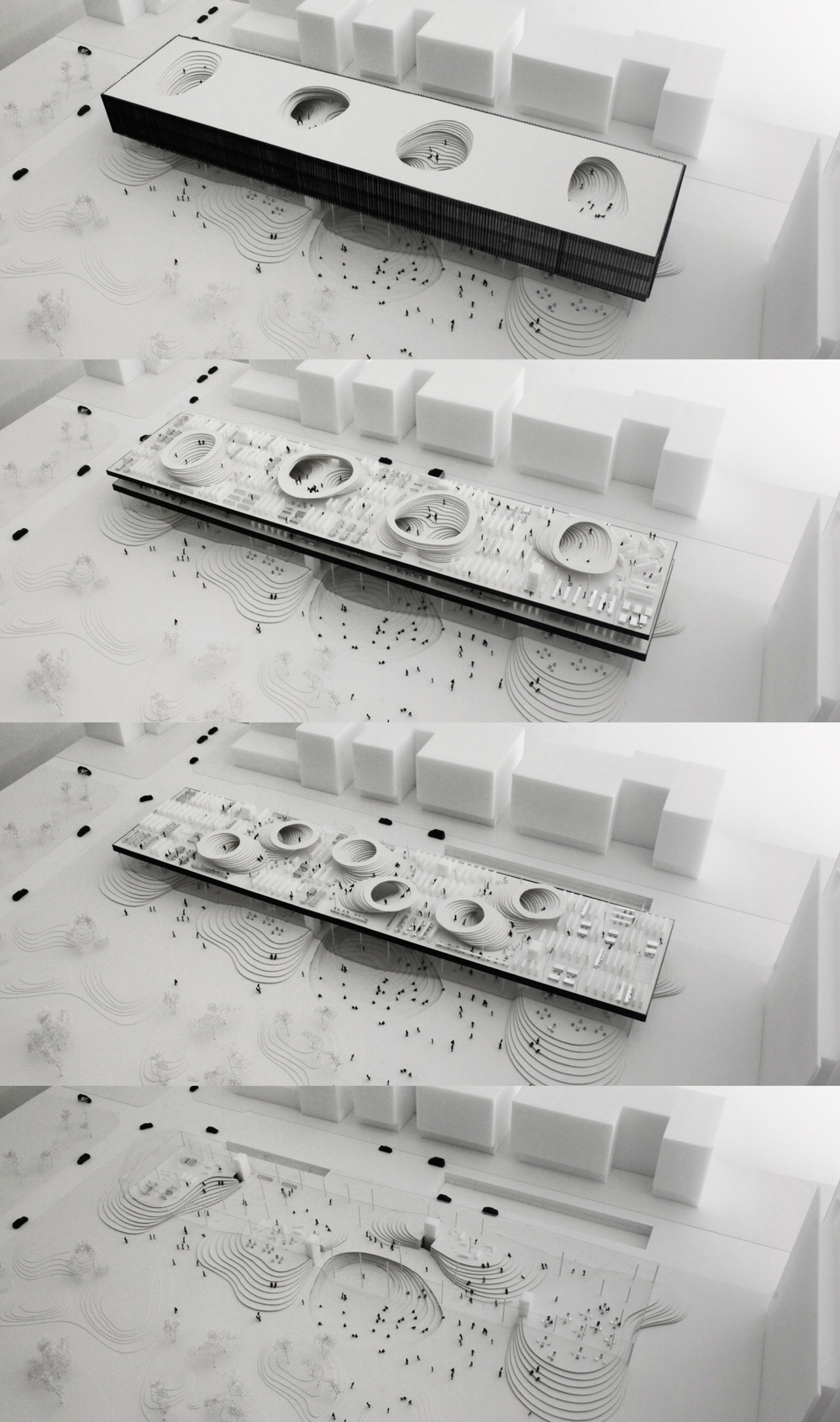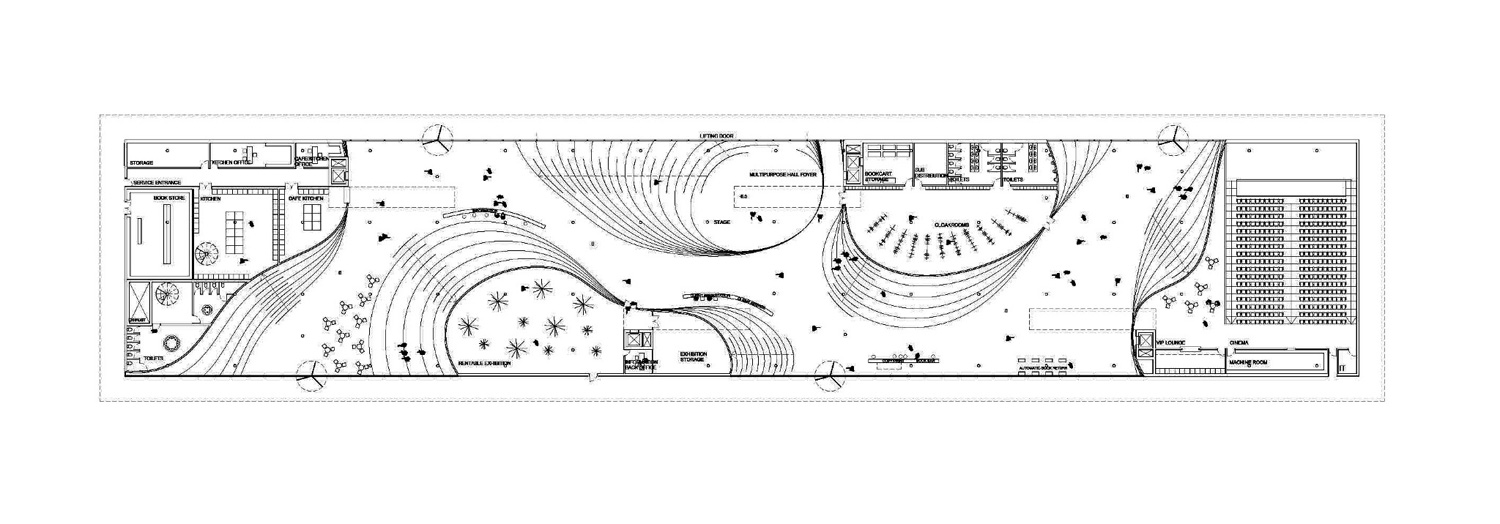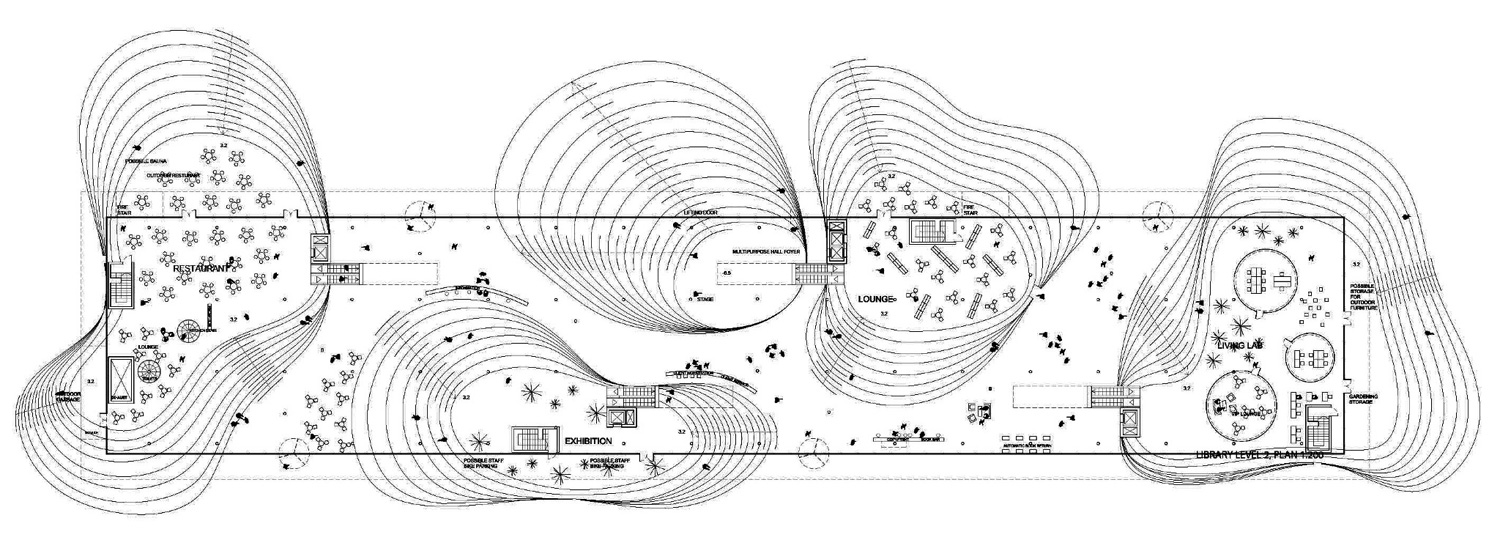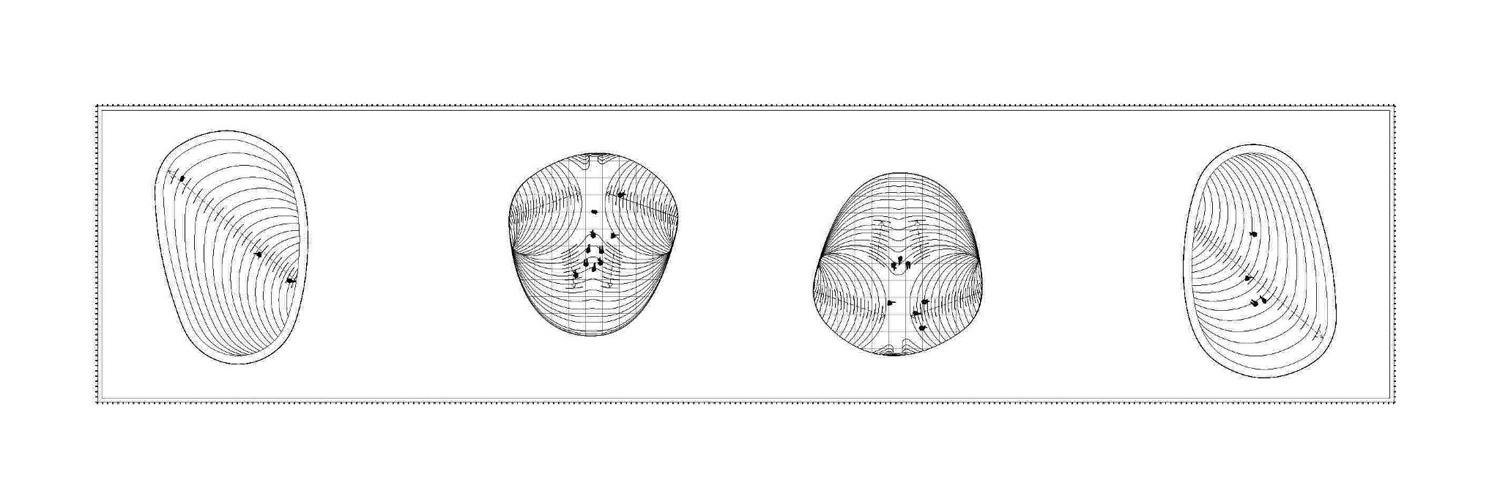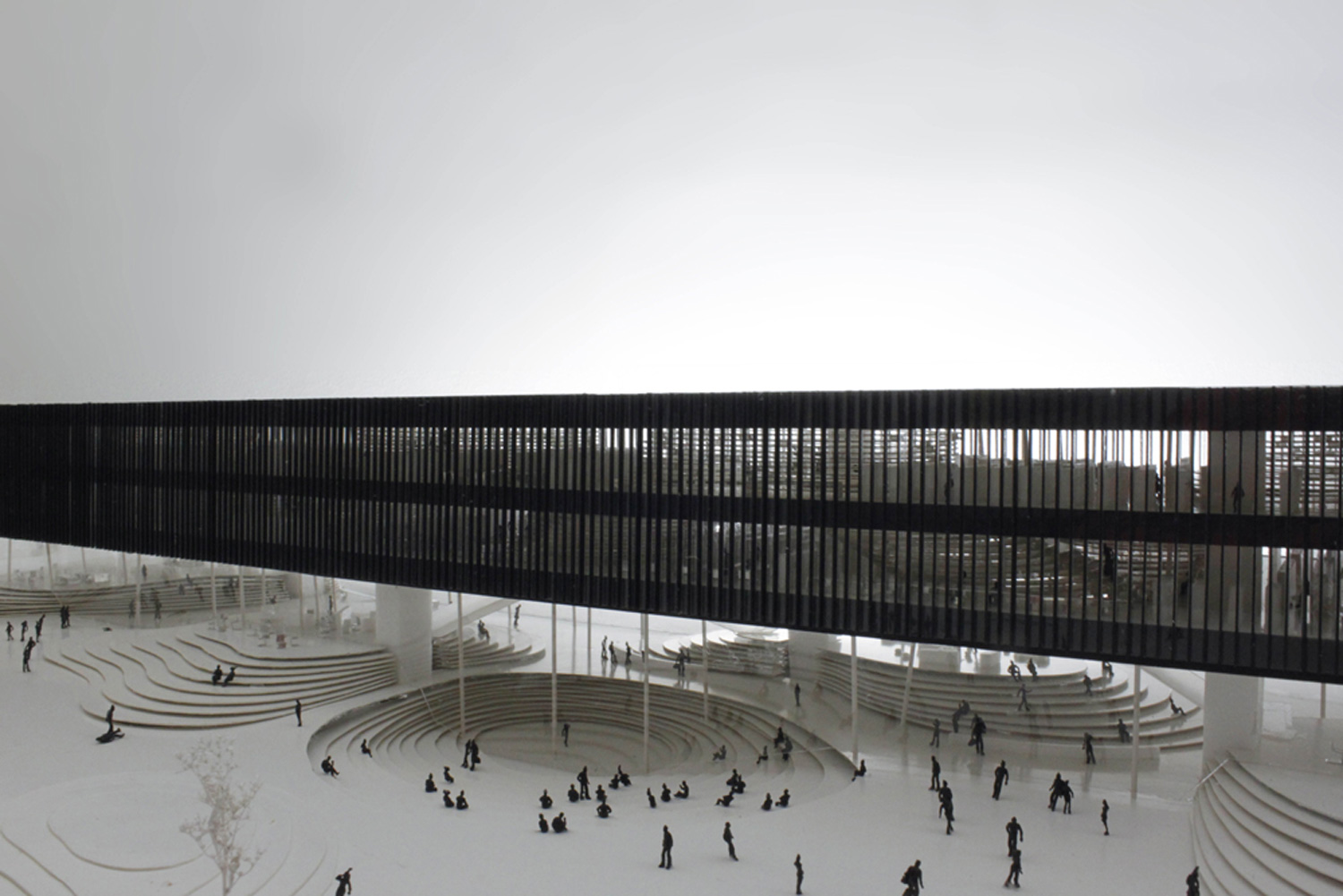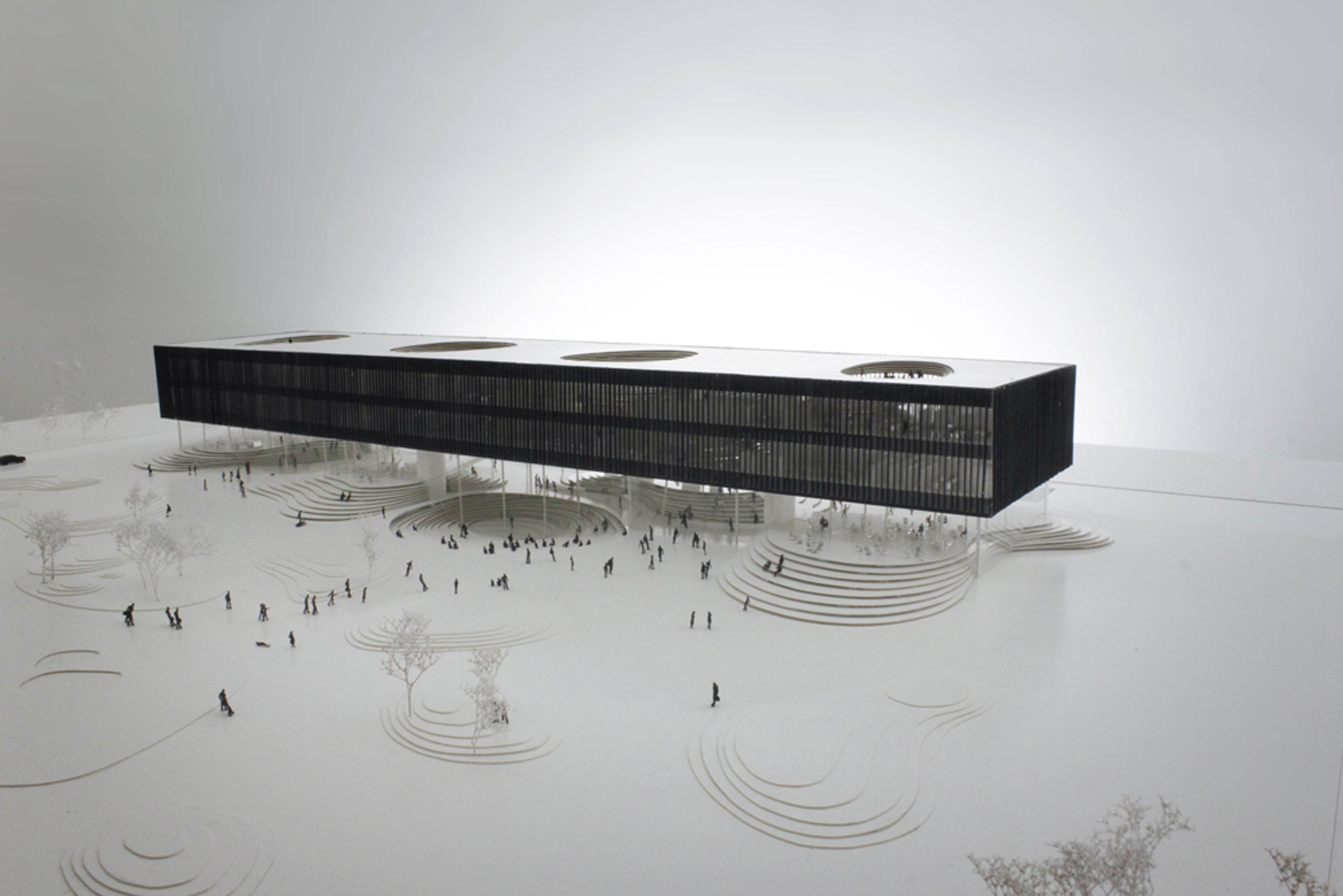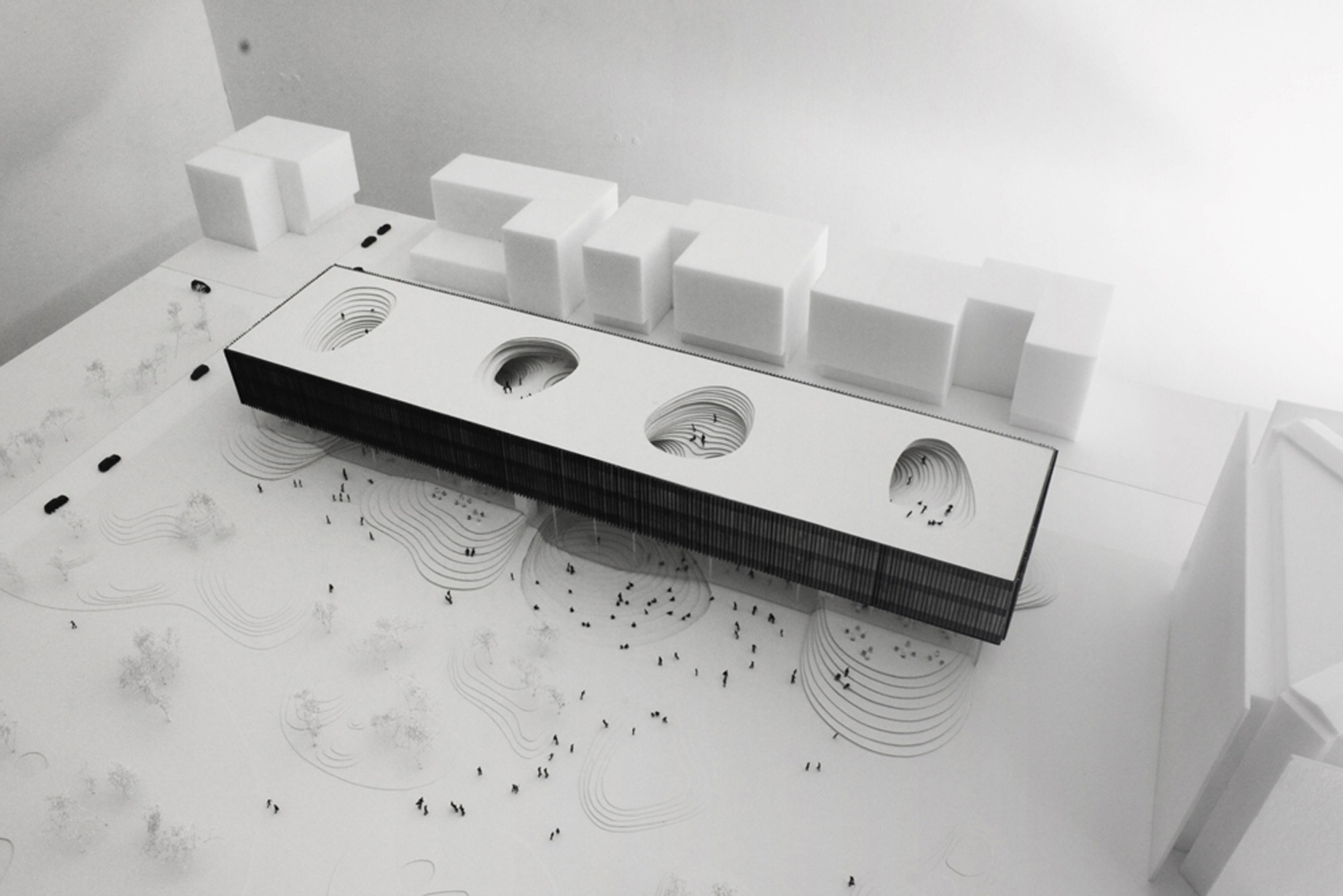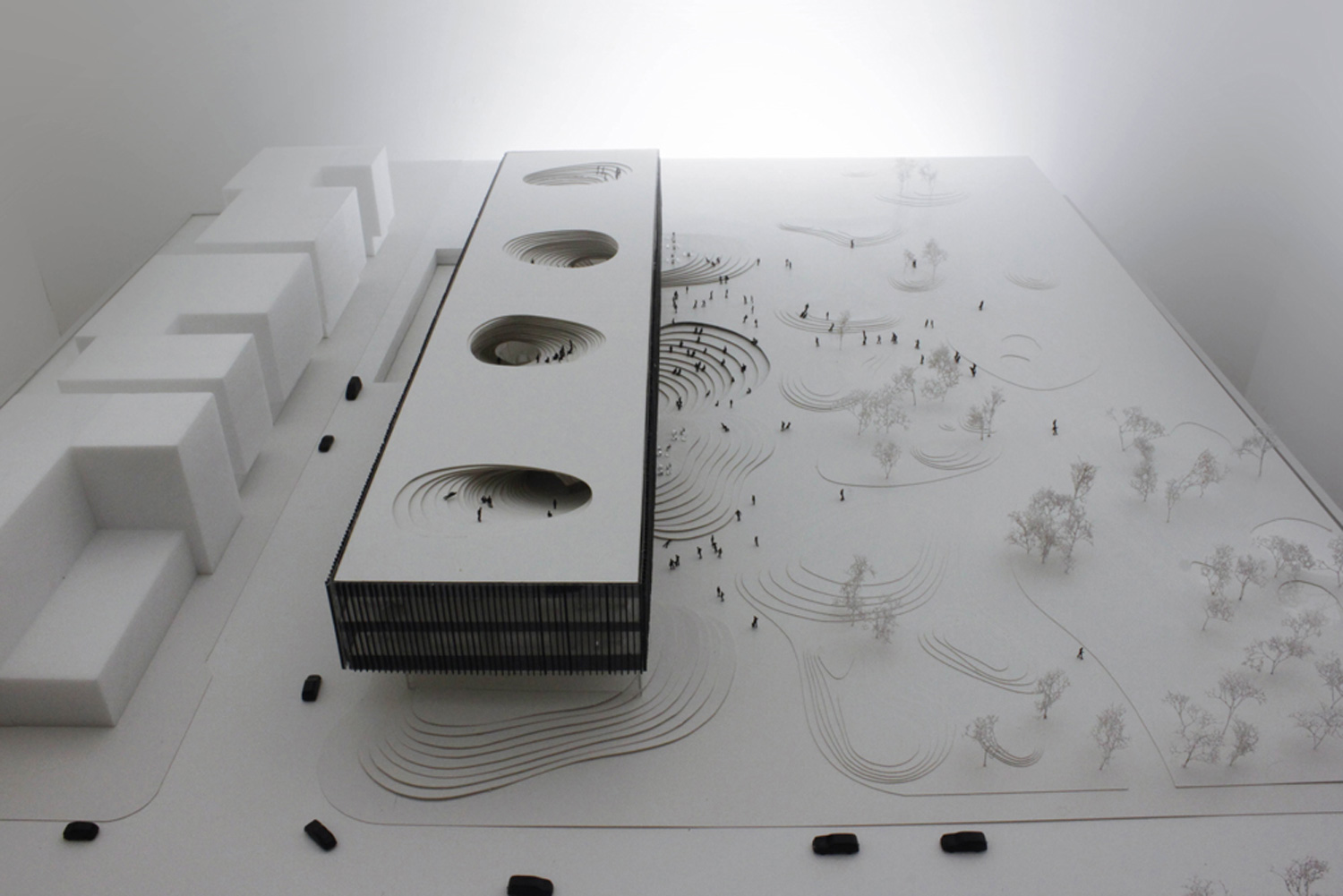Helsinki Central Library is a proposal by We architecture and jaja architects for Helsinki Municipality in 2012. It is located in Helsinki Finland in a park and urban setting. Its scale is large with a surface of 30.000 sqm . Key materials are glass and wood. Review the 7 proposals for the same competition.
Unique to the culture of Finland is the importance of its beautiful landscape. The site’s connection to the Töölönlahti area presents an opportunity to connect a cultural building to this cultural value. Just as the diversity and character of the Finnish landscape creates a unique national identity, we envision the Central Library’s unique context as an opportunity to create a narrative between landscape and library. Our proposal, the ‘Learning Landscape,’ will create a library that brings the qualities of Töölönlahti into the heart of Helsinki.
We propose to lift the library’s volume above a completely open ground floor to extend Töölönlahti’s landscape directly into the city. This gesture creates a topography of programmed spaces within the ground floor lobby. The inside spills out and the outside flows in, creating a dynamic terrain of public life, active spaces, and imaginative reading nooks. The ground floor lobby is the Central Library’s major interactive space, completely transparent to the exterior and extending over the entire footprint of the ground floor. It is designed as a vibrant public space that concentrates the most active spaces of the library in this special public space. The lobby’s terrain is envisioned as a multifunctional surface, shaped by the requirements of the program.
Closed programs are contained within the major ‘hill’ elements, and active spaces are celebrated as part of the terrain’s surface. By using the area both inside and outside of the terrain surface, the lobby is able to effectively double in size and stay as open as possible. This allows the most active spaces of the lobby to be concentrated on the ground floor, letting their activity breathe life into the lobby on the daily basis. A pedestrian canyon snakes through the lobby, connecting the east and west facades to create entrances into the library from all sides.
From the top of the hills visitors are invited into the library through large atrium spaces. The atriums serve as orientation points and light shafts, but also work as vertical circulation. By shifting a conventional atrium into a stepped topography, the Learning Landscape extends the park from the ground floor directly into the library. They culminate in 2 large interior reading rooms and 2 exterior terraces, providing the perfect place for meeting, casual reading, and lectures.
Visitors can expect to casually meander from the park to the collection area, without being constrained to a specific route of travel. The security provided by electronic technologies in book handling enables an informal atmosphere where security gates for visitors are no longer centralized. Critical to the Learning Landscape’s design is the need for universal access. Elevators are evenly spaced throughout the building and adjacent to the atrium spaces, ensuring that every part of the library is easily accessible to all members of the public.
The dynamic spaces created by the atrium and lobby are complimented by a simple volume containing the library’s collection. The library’s need for flexibility is accommodated by two efficient floors of collection and reading area, contained with a regular envelop with ample floor height. The atriums become organic sculptures in a rational plan that is easily understood by the visitor. In this area, interior walls and programs can easily move over time, adapting to the unforeseen changes the library will undergo in the future. The library’s volume meets the scale of the adjacent cultural and public institutions while not competing with their visual identity.
By maintaining a simple envelop, the building highlights the life of the ground floor and concentrates the activity to where it matters most. In this way, it provides a transition between the open space of the Töölö bay and the city, while becoming another icon in the cultural heart of Helsinki.
Siteplan
The exterior materiality of the library volume compliments the expressive ground floor. The facade is envisioned as an assembly of simple ceramic lamellas. Their vertical orientation provides ideal solar shading for the lengthy east and west facades, but also creates a playful surface by varying in depth and width. This variety creates a play of shadows and light that gives spatial quality and visual texture without competing with the organic landscape. The interior topography is materialized in wood, emphasizing a connection to nature with a traditional Finnish material.
The library’s topography is celebrated by wood that spills in and out of the building, treated as required to provide both longevity and warmth to the library’s spaces. This gesture articulates the library as a cultural ‘living room’ that is instinctively welcoming to the public. The wood weaves through the building in the atrium spaces, creating a variety of effects in how it interacts with the spaces it touches.
The Learning Landscape is structured by a system of offset rings that vary in depth and width to provide qualities on both sides of an organic surface. Their spacing opens to create opportunities for light, views, and shelving where appropriate. They close to shape spaces for sitting, areas for study, and nooks for casual reading. These spaces create a landscape throughout the building that appreciates the human scale, giving every visitor to the library a unique personal experience. The changing role of the library can be anchored by this quality.
By creating a topography of learning and doing, the Helsinki Central Library will become an active cultural building and a natural meeting place. The Learning Landscape will create a landscape that weaves the activity of the city and the life of the park into meaningful spaces. By connecting the city to the treasured green space of Töölönlahti, the Central Library will become a cohesive fixture of Helsinki and a timeless cultural building.
The lobby
The lobby shapes a link between the park and the city. An inhabitable landscape snakes through the lobby, fed by the daily use of Helsinkians and visitors to Töölönlahti’s celebrated scenery.
The atrium spaces
The learning landscape extends a walkable terrain from the park to the library with a vertical public promenade. The atrium spaces culminate in amphitheatres and outdoor terraces for casual gatherings.
The City Library
The City Library becomes a building that is truly created for public life, open to all sides and giving back to the adjacent spaces. The inside spills out and the outside flows in.
